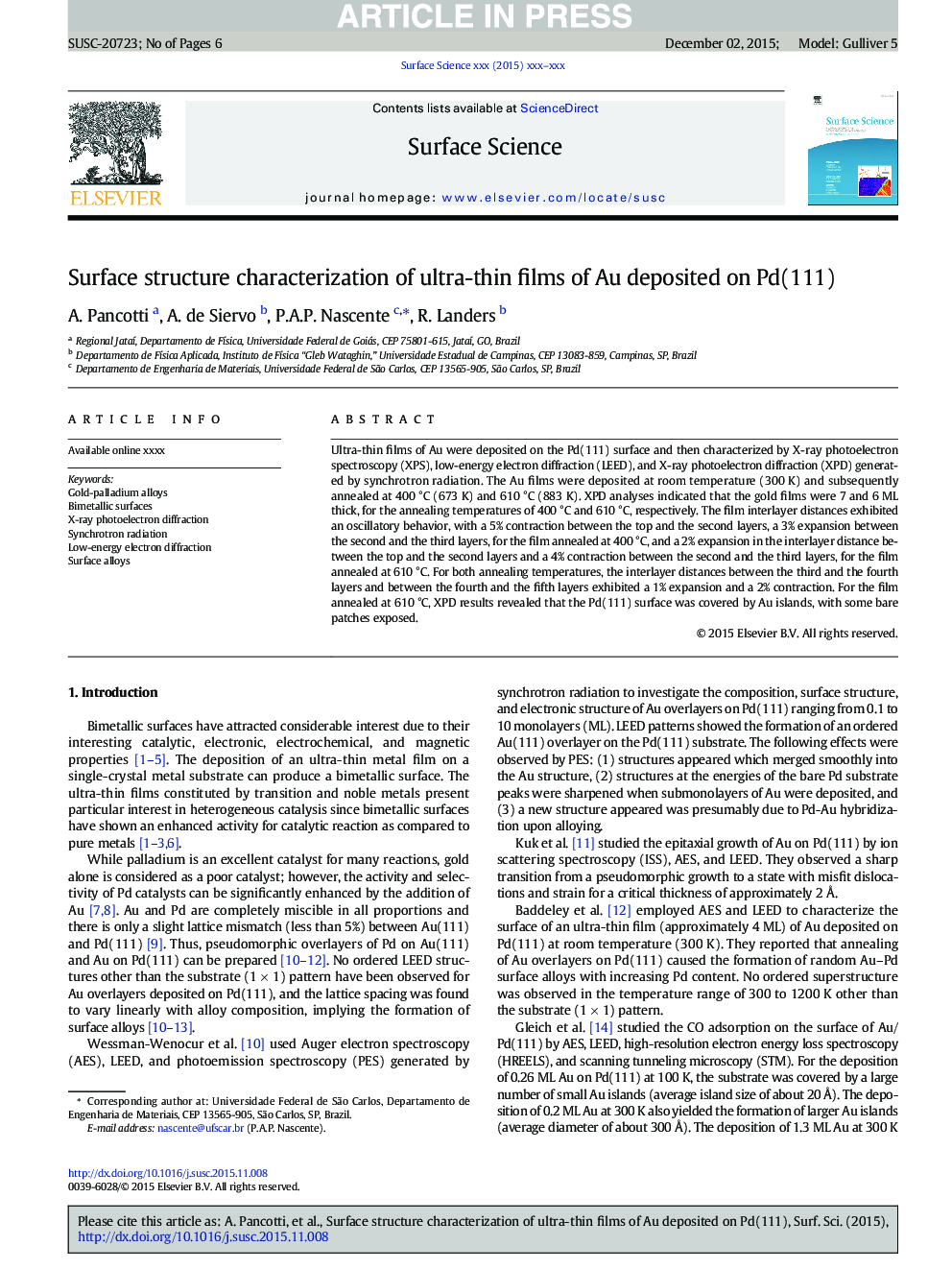| Article ID | Journal | Published Year | Pages | File Type |
|---|---|---|---|---|
| 5421655 | Surface Science | 2016 | 6 Pages |
Abstract
Ultra-thin films of Au were deposited on the Pd(111) surface and then characterized by X-ray photoelectron spectroscopy (XPS), low-energy electron diffraction (LEED), and X-ray photoelectron diffraction (XPD). XPD analyses indicated that the gold films were 7 and 6 ML thick, for the annealing temperatures of 400 °C and 610 °C, respectively. The film interlayer distances exhibited an oscillatory behavior, with a 5% contraction between the top and the second layers, a 3% expansion between the second and the third layers, for the film annealed at 400 °C, and a 2% expansion in the interlayer distance between the top and the second layers and a 4% contraction between the second and the third layers, for the film annealed at 610 °C. The film annealed at 610 °C exhibited Au islands covering the Pd substrate surface, with some bare patches exposed. Experimental XPD patterns for Au 4f7/2 emitter (left) and Pd 3p1/2 emitter (right) for the Au film deposited on Pd(111) annealed at 610 °C.230
Keywords
Related Topics
Physical Sciences and Engineering
Chemistry
Physical and Theoretical Chemistry
Authors
A. Pancotti, A. de Siervo, P.A.P. Nascente, R. Landers,
